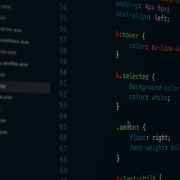A qualitative investigation exploring why dance festivals are risky environments for drug use and potential adverse outcomes
Dance festivals have been shown to be high-risk events for use of drugs such as ecstasy/MDMA and possible adverse effects associated with use. However, few studies have examined what makes festivals such risky environments. This research aimed to determine festival-specific risk factors for adverse outcomes related to drug use.
Methods
In-depth interviews were conducted with 35 key informants in North America who deemed themselves experts in new psychoactive substances, and identified as drug checkers, sellers, or experienced users. Interviews were coded in an inductive manner, and we conducted thematic analysis to identify relevant themes.
Results
We identified four main themes focusing on festival attendance as a risk factor for risky drug use and related outcomes: attendees inexperienced with electronic dance music parties and party drugs, risky drug purchasing, risky drug use practices, and festival-specific environmental risk factors. Festivals attract a wide array of people not experienced with party drugs, yet drugs like ecstasy are commonly sought by such individuals inside festivals. Relying on strangers inside to purchase drugs is a risk factor for purchasing adulterated product. Fear of security/police at festivals leads to risky drug-taking such as ingesting one’s full batch of drugs at the entrance. These risks are compounded by environmental factors including crowding, hot temperature, and lack of water (which lead to dehydration), long/consecutive event days (which can lead to exhaustion), and inadequate medical emergency response.
Conclusions
We determined modifiable risk factors which can both inform future research and future prevention and harm reduction efforts in this scene.
Read the open access article in full AT THIS LINK.










